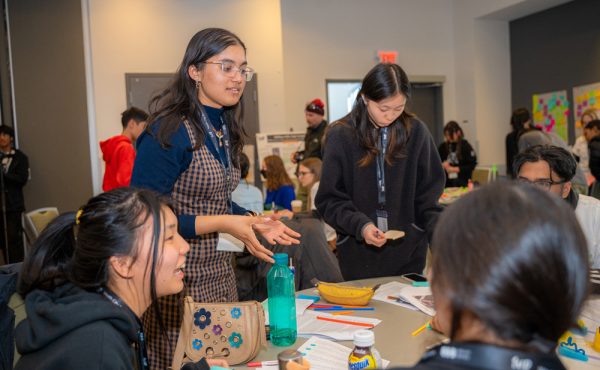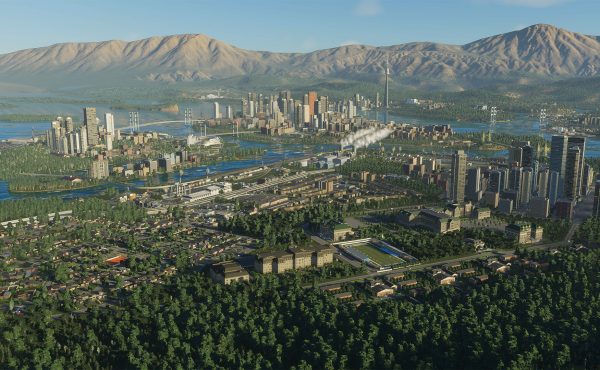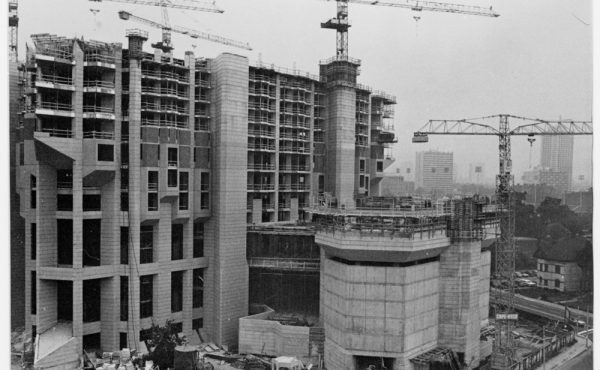
Spacing contributor Ian Malczewski spent September 30 – October 3 in Niagara Falls at a joint conference held by the Ontario Professional Planners Institute and the Canadian Institute of Planners. He is sharing some of the lessons he learned there and reflecting on their implications on public space, livability, and sustainability in cities.
Like most people interested in Toronto’s heritage, I harbour a bit of bitterness; perusing the Toronto Archives or learning about failed battles to preserve historic structures will do that to you. But amendments to Ontario’s Heritage Act in 2005 changed the landscape for heritage preservation, giving planners and municipal governments new tools with which to preserve the character of our cities.
A session at the OPPI / CIP conference on this subject, entitled “Saving our Cities: Contemporary Approaches to Heritage Planning,†piqued my interest. It was lead by Antonio Gà³mez-Palacio of the Office for Urbanism and architect Phil Goldsmith, who have worked on a number of heritage-related projects together. Although heritage often appears to be an issue of saving significant buildings, there is another, equally important conversation that I feel often gets short shrift: the preservation of intangible heritage.
Intangible heritage is the associative heritage that characterizes a community; it is made up of the stories and symbolic values that attach themselves to and come to define the built environment. During the last few years, for example, Bloor Street across from the ROM has seen a number of buildings demolished to make way for residential towers. While few would argue against building high-density housing along a major transit route, the strip lost a number of bars and restaurants (including the world’s first Swiss Chalet!). I worked at the ROM during this transition, and though no one would claim any of the lost buildings were architectural masterpieces, my co-workers and I were saddened by their demolition; not only did we lose our after-work watering hole (the Bedford Ballroom) and one of our quick-and-dirty lunch spots (Harvey’s), but the loss of these buildings irrevocably altered the feeling of the neighbourhood.
It’s easy for these conversations to wander into sentimental territory, and I don’t think halting all development is the solution (especially when that change represents good planning), but I’ve often wondered if there was a way development could harness and build on these intangible qualities — the feeling of a place — rather than erasing them altogether. Oral history projects like [murmur] provide invaluable archives for these intangibles, but can stories and feelings actually be leveraged into shaping the future development of a community?
At times, the presenters painted a pessimistic picture. Mr. Goldsmith reiterated throughout the presentation that arguing for symbolic value – especially to city-builders whose primary interest is in economic value – is often a lost cause. He was particularly critical of the “let’s-make-a-deal†planning framework in Ontario, a reference to Section 37 of the Planning Act, which allows municipalities to award extra density to developers in exchange for public amenities, like art or green space. This pattern of development, he said, can result in development far out of scale with a community’s character, eroding its sense of place. With developers able to appeal a municipality’s decisions to the OMB, there are structural challenges to preserving the symbolic value of our communities, too. On their own, stories and symbolic value just aren’t enough.
But some of planning tools enabled by the amended Heritage Act provide some reason for hope. Instead of leveraging intangibles to shape the built environment, the built environment can be leveraged to preserve the intangibles. Establishing a Heritage Conservation District, for example, can create guidelines by which to guide subsequent neighbourhood change. An HCD — contrary to myths — doesn’t freeze development in a neighbourhood, but rather tries to keep that development in step with the community’s already existing character. By taking a larger view of heritage – that of the district instead of the individual property – it’s possible to preserve those intangible feelings of place and harness them to guide future development.
There are economic arguments for this kind of heritage preservation, too: they can attract visitors, increase the viability for businesses to thrive, and improve the quality of life for area residents. Both Mr. Gà³mez-Palacio and Mr. Goldsmith suggested that we need to move beyond a discourse of progress versus preservation, and realize that we can achieve both at once with this kind of planning.
Thinking about the session later, I wished I had asked about the relationship between heritage preservation and gentrification. What happens to the intangibles of a community if the storytellers who have helped create its unique sense of place are priced out of their homes? What tools can be leveraged to ensure that these intangibles aren’t only preserved in symbolic gestures, but actually incorporated and given room to evolve in a neighbourhood’s future?
All told, I left encouraged by the prospects for the heritage preservation, and, given the number of people that attended the session, I wasn’t alone. Maybe, in the future, those feelings of bitterness will be replaced by pride, and our neighbourhoods will reflect our ability to incorporate our history into building our future.
photo by Toronto Archives




3 comments
Derelict buildings and burned out streetlights, or dead stretches of sidewalk for instance lower self esteem for residents and business owners, and that sort of thing also lowers safety for pedestrians and drivers.
My wife and I chose a relatively run down building to redevelop into a store and as our residence – maybe brave, maybe stupid, but about as costly as trying to find a condo and a rental shop so we took the plunge and found that we were developers albeit on a small scale.
During the 18 month process of getting a building permit which involved an overly complex lane-way environmental engineering approval, the building was derelict and vacant. (not good for neighborhood)
Then during demolition and construction for 6 months there was a different stress on our neighborhood with hording, cranes, trucks and noise.
Now that we have opened our store 3 years after starting the project, I am pretty sure that there is a net positive impact in the flow of pedestrian traffic, and the general mood of residents also seems better than before our project started.
I think that people can endure construction over 6 months more easily than the 18 months of vacancy right on their sidewalks; even though construction is noisy and a bit obstructive – it is a progressing thing that passes relatively quickly.
Larger scale projects, however, are the norm, bringing with them larger scale disruptions to a neighborhood for a much longer time.
During the process the transitional state could use more consideration. In some ways civilizing the transitional state is the reality of humanizing growing cities.
We make a thing about heritage values and preservation, and often that has validity, not just tourist dollar validity, but landmark resonance which can be vital to people during their hustle and bustle.
In a way I think that the process of change has a bigger footprint than each individual change itself, especially since the process seems endless, while tourism and heritage artifacts create a bait and switch from what really matters while living in a city.
I am just yapping of course.
Great thoughts. Thanks for sharing the ideas from the conference. I think this is exactly what Toronto needs. Perhaps a larger conference on this topic should be in Toronto with more city stakeholders within the discussion. That would be interesting to see all sides of the argument given by those who work with the issues every day.
Thanks for sharing, Jerry, and you’re welcome, Jo. Glad you’re enjoying!